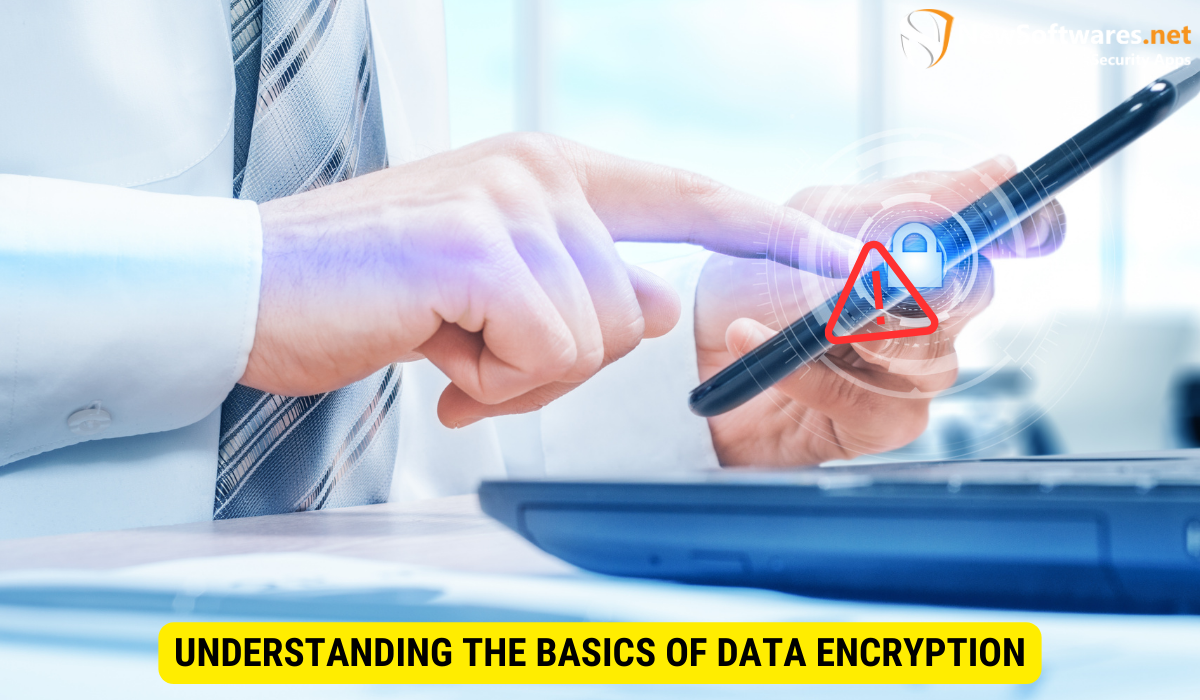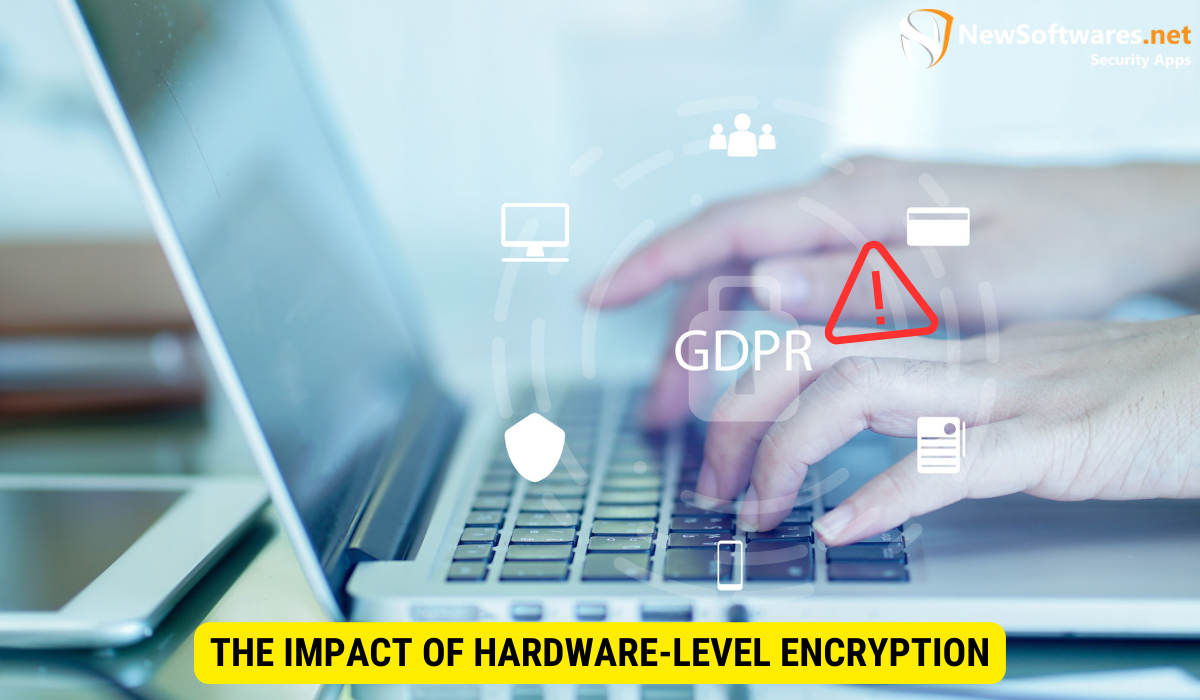Square employs hardware-level data encryption to enhance security in payment processing, protecting sensitive information from unauthorized access and ensuring data integrity and confidentiality.
In today’s digital age, data security is of paramount importance, particularly when it comes to financial transactions. Square, a leading payment processing company, recognizes the need for strong security measures to protect sensitive information. One of the ways Square ensures the security of its customers’ data is through hardware-level encryption. Together, we will explore the basics of data encryption, Square’s approach to data encryption, the encryption process at Square, security measures beyond encryption, and the impact of hardware-level encryption.
Understanding the Basics of Data Encryption

Data encryption involves converting plaintext data into a coded format known as ciphertext. This process renders the data unreadable to unauthorized individuals. The primary goal of data encryption is to shield sensitive information from being accessed or tampered with by malicious actors.
Data encryption is a fundamental concept in the world of cybersecurity. It protects data at rest, in transit, and use. Without encryption, sensitive information would be defenseless to interception and exploitation by hackers and cybercriminals.
When data is encrypted, it undergoes a complex mathematical transformation that scrambles the information into an unintelligible form. This transformation is performed using encryption algorithms, which are mathematical formulas designed to ensure the confidentiality and integrity of the data.
Encryption algorithms use encryption keys to encrypt and decrypt data. These keys are essentially instructions that determine how the data is transformed. Without the correct key, the encrypted data remains unreadable and useless.
What is Data Encryption?
Data encryption is a method that converts plain, readable data into an encoded format to protect it from unauthorized access. This encoded data is meaningless without a decryption key, which allows authorized users to retrieve and decrypt the information.
Data encryption can be implemented in various ways, depending on the level of security required and an organization’s specific needs. Some common encryption techniques include symmetric encryption, asymmetric encryption, and hashing.
Symmetric encryption uses a solo key to encrypt & decrypt data. This key must be kept top secret and shared securely between the sender and the recipient. On the other hand, asymmetric encryption uses a couple of keys: a public key for encryption and a private key for decryption. This allows for secure communication among parties who have never met before.
Hashing, while not technically encryption, is another important concept in data security. Hash functions take an input and create a fixed-size string of characters, recognized as a hash value. This value is unique to the input data and can be used to verify the integrity of the data. However, unlike encryption, hashing is a one-way process, meaning the original data cannot be retrieved from the hash value.
Importance of Data Encryption in Payment Processing
Data encryption is vital in payment processing, where personal and financial information is transmitted between various parties. By encrypting data, Square ensures that sensitive information, for instance credit card numbers and customer details are secure throughout the payment process. This instills trust in businesses and customers and reduce the hazard of data breaches and identity theft.
Payment processing involves multiple steps, including collecting, transmitting, and storing sensitive data. This data would be susceptible to interception and misuse without proper encryption measures. Encrypting the data makes it almost impossible for unauthorized individuals to decode the information, even if they manage to access it.
In addition to encryption, other security measures such as tokenization and secure key management are often employed in payment processing systems. Tokenization replaces sensitive data with unique identifiers, known as tokens, which are meaningless to anyone who does not possess the corresponding decryption key. Secure key management ensures that encryption keys are stored and accessed securely, further enhancing the overall security of the payment process.
Overall, data encryption is a significant component of modern payment processing systems. It protects sensitive information and helps maintain the integrity and trustworthiness of the entire payment ecosystem.
Square’s Approach to Data Encryption
Square takes a comprehensive approach to data encryption by integrating it throughout its entire payment ecosystem. This approach encompasses both software and hardware-level encryption to provide robust security measures.
Square’s Encryption Philosophy
Square’s encryption philosophy revolves around the principle of defense in depth, which involves layering multiple security measures to protect data from different angles. They employ robust algorithms, secure network connections, and operational practices to ensure the security of their customers’ data.
The Role of Hardware in Square’s Encryption
Hardware plays a crucial role in Square’s encryption strategy. Square utilizes secure hardware devices for encrypting data at the point of sale (POS), ensuring that sensitive information is protected right from the moment it enters the system. By encrypting data at the hardware level, Square adds an additional film of security, making it significantly more challenging for malicious actors to compromise the data.
The Encryption Process at Square
At Square, data encryption is a multi-step process that ensures customer information’s confidentiality and security.
Data Encryption at the Point of Sale
When a customer makes a payment using Square, their sensitive data, for instance credit card information, is straight away encrypted at the point of sale. This encryption occurs directly on the secure hardware device, ensuring the data remains protected throughout the transaction.
How Square Handles Key Management?
Encryption relies on encryption keys used to encrypt and decrypt data. Square employs industry-standard key management practices to securely handle and store these keys. By carefully managing the encryption keys, Square ensures that only authorized individuals can access them, protecting the data from unauthorized decryption.
Security Measures Beyond Encryption
While data encryption provides a robust layer of security, Square goes the extra mile to protect their customers’ data.
Square’s Additional Security Protocols
Square implements additional security protocols to supplement data encryption. These protocols include firewalls, intrusion detection systems, and constant monitoring to detect and prevent any unauthorized access attempts. These measures actively safeguard data from various forms of cyber threats.
Ensuring Data Integrity and Confidentiality
Square employs measures to ensure both the integrity and confidentiality of customer data. Data integrity is maintained through validation and error checking, preventing unauthorized modifications. Furthermore, Square’s security measures also maintain the confidentiality of customer data by limiting access rights and employing stringent access control mechanisms.
The Impact of Hardware-Level Encryption

Hardware-level encryption offers several benefits and presents unique challenges that Square carefully addresses.
Benefits of Hardware-Level Encryption
Hardware-level encryption provides enhanced security for customer data during payment transactions. By encrypting data at the hardware level, Square reduces the risk of interception and tampering, ensuring the privacy and integrity of the transmitted information. This instills confidence in customers and businesses, strengthening trust in the payment processing ecosystem.
Potential Challenges and Solutions
Implementing hardware-level encryption can present challenges, such as increased costs and potential compatibility issues. However, Square mitigates these challenges by utilizing state-of-the-art hardware devices that offer efficiency and compatibility with various systems. By investing in robust hardware and staying up to date with technological advancements, Square overcomes potential challenges, ensuring the seamless implementation and benefits of hardware-level encryption.
Key Takeaways
- Data encryption is vital to protect sensitive information in payment processing.
- Square employs hardware-level encryption to add an extra layer of security to its payment ecosystem.
- Encryption at the point of sale and secure key management contribute to safeguarding customer data.
- Square implements additional security protocols beyond encryption to ensure data integrity and confidentiality.
- Despite potential challenges, hardware-level encryption offers security, trust, and data protection benefits.
Frequently Asked Questions
Why is data encryption important in payment processing?
Data encryption is essential in payment processing to shield sensitive information, for example credit card numbers and customer details from unauthorized access and potential data breaches.
What role does hardware play in data encryption?
Hardware is crucial in data encryption, especially in payment processing. Hardware-level encryption adds an extra layer of security by encrypting data at the point of sale, making it considerably harder for malicious actors to compromise the information.
How does Square handle encryption keys?
Square follows industry-standard key management practices to securely handle and store encryption keys. By carefully managing these keys, Square ensures that only authorized individuals can access them, effectively protecting the encrypted data.
What security measures does Square employ beyond encryption?
In addition to encryption, Square implements additional security protocols such as firewalls, intrusion detection systems, and constant monitoring to detect and prevent illegal access attempts.
What are the benefits of hardware-level encryption?
Hardware-level encryption offers enhanced security for customer data during payment transactions. It reduces the risk of interception and tampering, instilling confidence in customers and businesses and strengthening trust in the payment processing environment.
Conclusion
As the need for secure payment processing continues to grow, Square’s commitment to data encryption at the hardware level ensures that customer data remains safe and secure. By implementing a multi-layered security approach, Square enhances businesses’ and customers’ trust and confidence. With hardware-level encryption, Square provides added security measures that help prevent data breaches and maintain the integrity and confidentiality of sensitive information.
